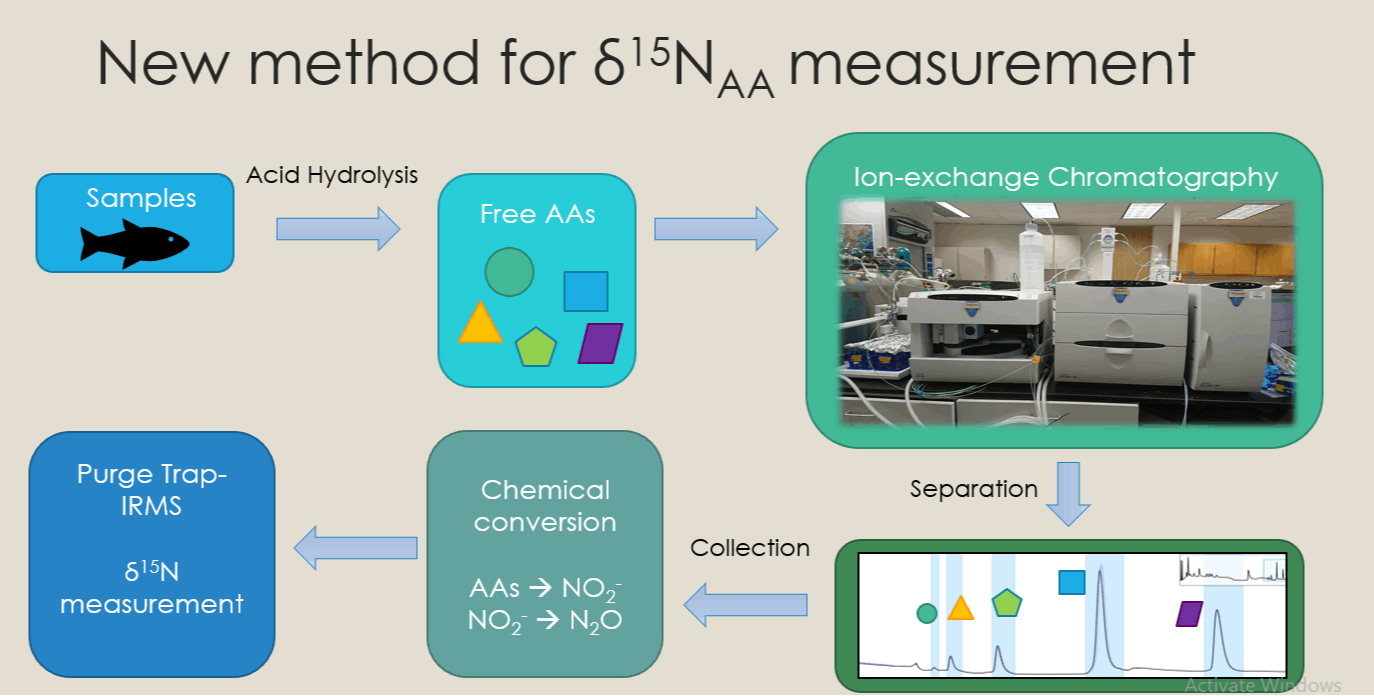

Stable nitrogen isotopic ratios (δ15N) have been widely employed in marine ecological studies over the past few decades, particularly on the marine nutrient cycling, such as reconstructing the trophic structure, nitrogen sources and utilization patterns (Wada et al., 1975; Altabet and Francois, 1994). These early investigations were based on bulk analysis, integrating all nitrogen from various compounds in a single sample. Yet, many independent factors could contribute to the bulk δ15N values, such as the baseline values, trophic structure and multiple N sources, making the interpretation of δ15N challenging (Ohkouchi et al., 2017). Therefore, there is a growing interest in the application of Compound-Specific Isotope Analysis of individual amino acids (CSIA-δ15NAA), which could decouple the signals arisen from the baseline variation and trophic transfers. Amino acids (AA) can be classified to two categories: Trophic AAs demonstrate large 15N enrichment when trophic level increases, while the 15N enrichment of Source AAs remains little, retaining the baseline δ15N value (McClelland and Montoya, 2002). Obtaining individual δ15N measurement for each AA could facilitate the assessment of trophic position and baseline identification.
One of the potentials of CSIA-δ15NAA is the reconstruction of past climate-forced variations in marine biogeochemical cycling from well-preserved archives for isotope records, including downcore sediment and coral skeletons. It has been speculated that the δ15NTHAA signals produced by phytoplankton in the euphotic zone are carried by sinking particles and eventually deposited on the sea floor as sediment or assimilated by deep-sea coral, building a natural archive for past variability (Altabet, 1988; Batista et al., 2014; Sherwood et al., 2011, 2014). However, there are only a few studies validating this transfer process and the spatial coverage is limited (McCarthy et al., 2007; Hannides et al., 2013; Batista et al., 2014). The other problem is that the diagenesis effect on the AAs present in marine sediments is poorly understood, hindering the development of δ15NAA as a palaeoceanographic proxy (Altabet and Francois, 1994).